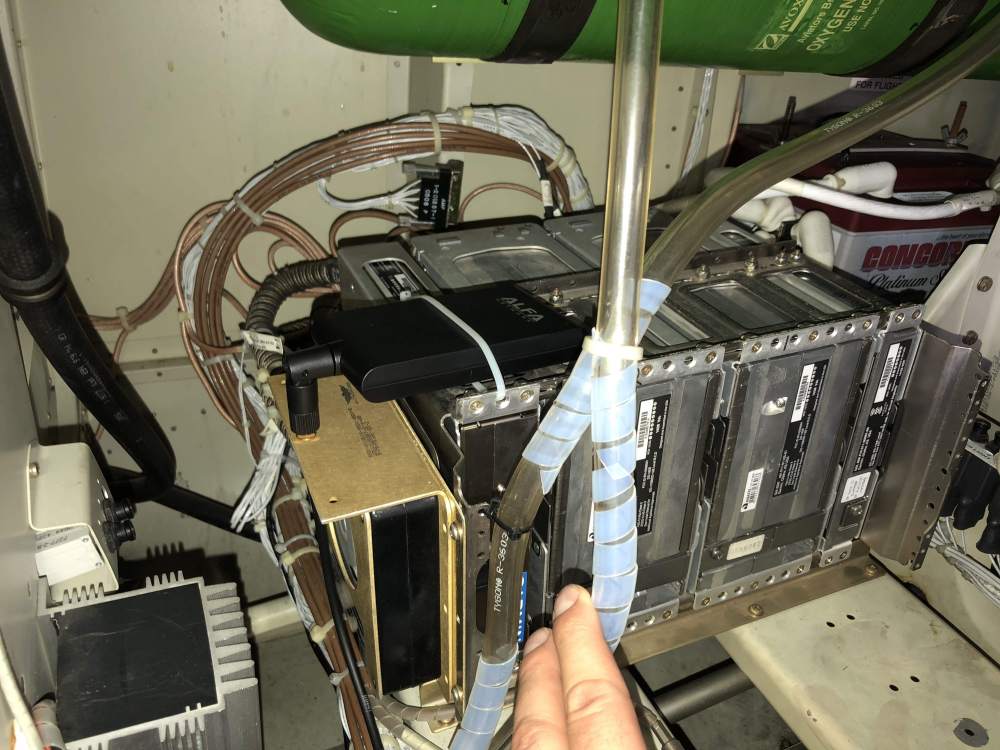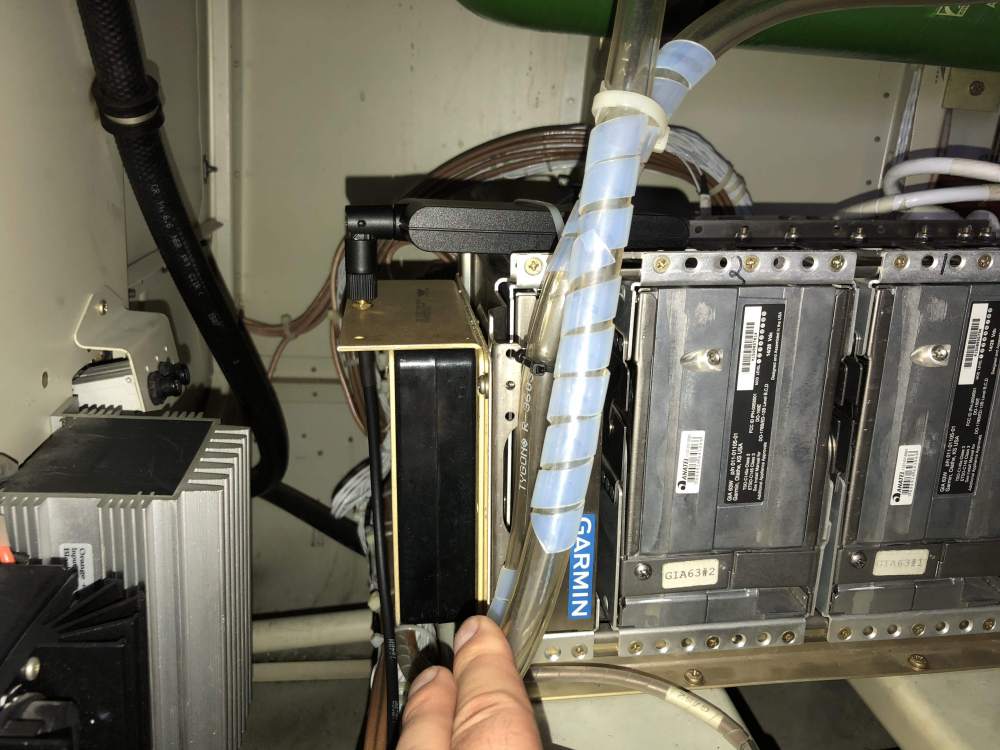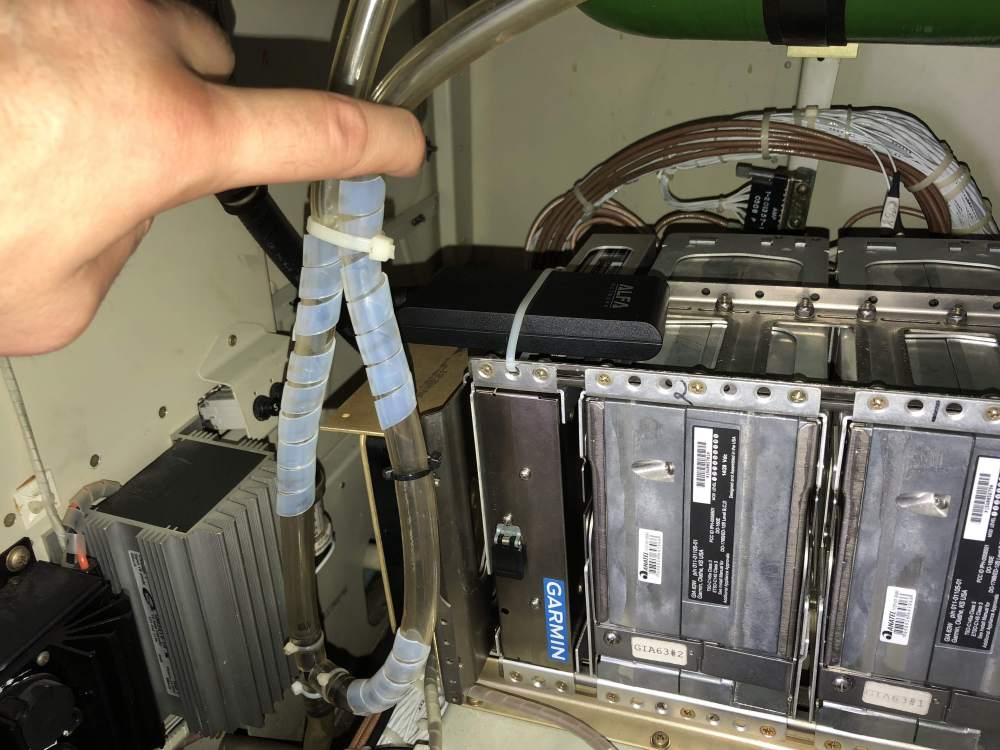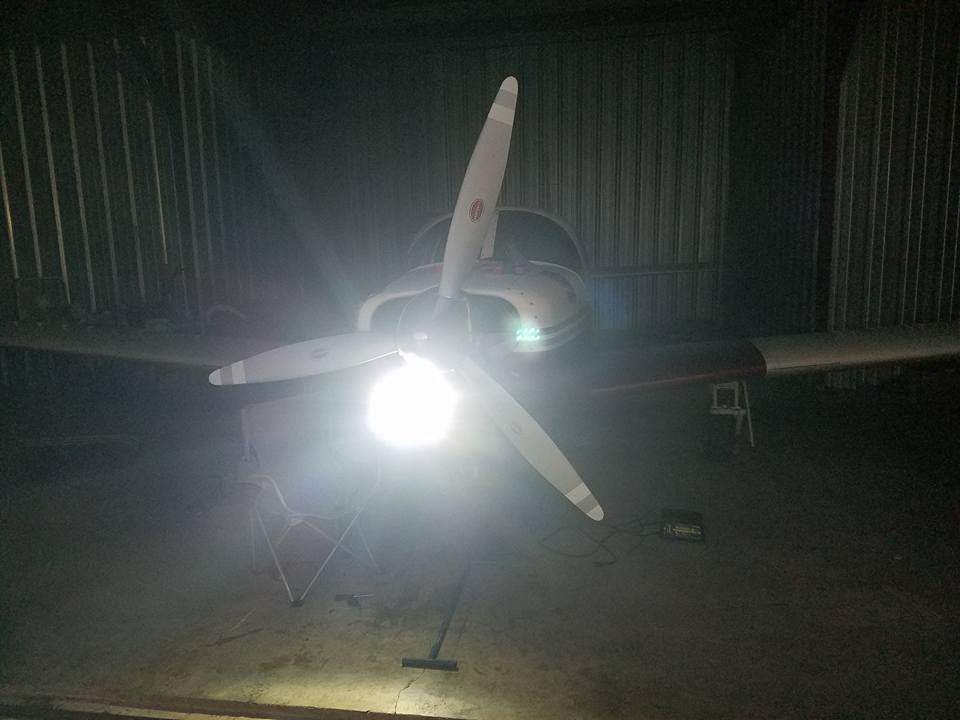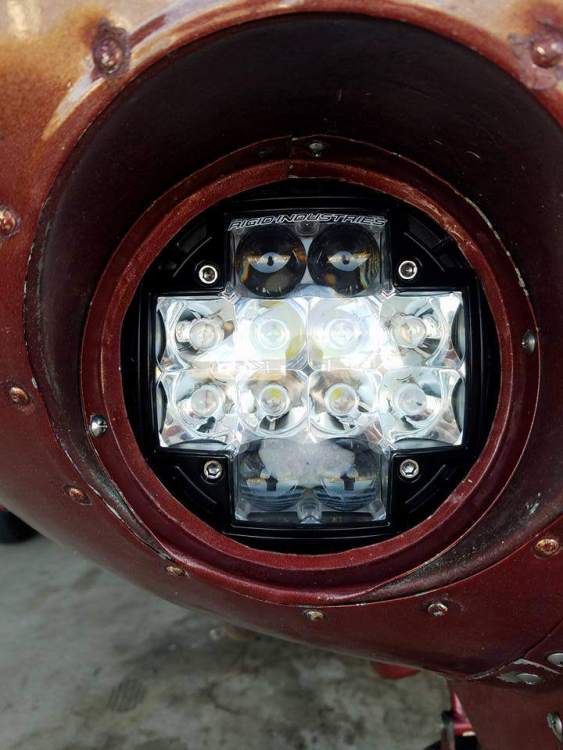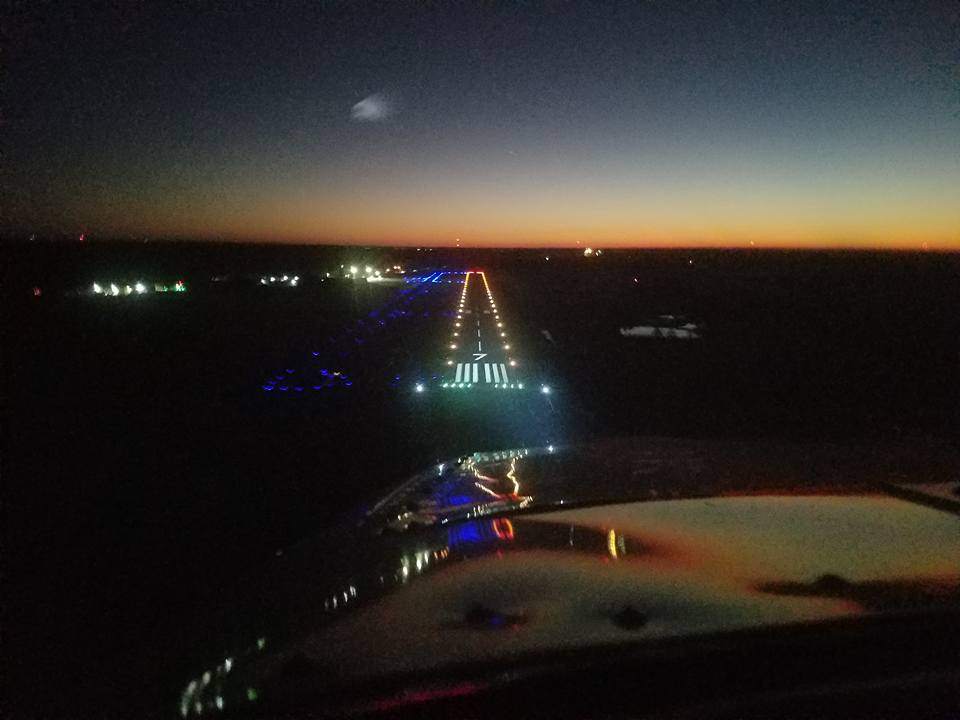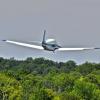Leaderboard
Popular Content
Showing content with the highest reputation on 10/08/2018 in all areas
-
Happy to be a part of the Mooney family and wanted to share a story! I flew into Potsdam (PTD) on Friday evening with the plan to meet up with some friends in Ogdensburg and go hiking the next day in the Adirondacks. I didn't fly into OGS since they are some price gouging bastards and really need to be the target of an AOPA campaign of sorts.. (they charge you $100 if you fly in after 4pm on weekdays to open the door for you for a single engine piston and apparently it's another $100 to fly out on the weekends). I'd rather pay for a $100 cab ride than support that sort of pricing structure for single engine pistons (although slightly off topic, but our Lyft driver back told us that if you call the local police station in OGS they will let you in and out of the airport for free). Before flying into PTD, I looked at Lyft/Uber and saw there were drivers in the area, but when we flew in, I go to request and there were no cars available. I called the local taxi company and they said they couldn't send anyone out that way since they only had one car on the road (it's about a 45 minute drive). My wife and I are a bit stranded when I see a beautiful Mooney land. It's a gorgeous 305 Rocket with a fresh paint job and it turns out to be @aviatoreb! He didn't even hesitate after talking for a bit and let us borrow his car for a night! I was so grateful to see such kindness displayed among us and hope to be able to pay it forward in the future! If any of you ever need anything around my homebase in KIAG, please reach out!10 points
-
Well, I'm home now, but it was an experience. My wife decided she wanted to get out AZ and go see some 'real' fall colors. I heard the area around CDC was pretty good for that, so I planned it out. Weather forecast was for some light rain all day Saturday, but ceilings above 3000' until late into the evening. We left bright and early Saturday morning. Everything was pretty good until we started getting closer to the field. Forecast called for 3700' ceilings, actual was more like 2000'. I knew the forecast showed improving conditions, so we went on in. Landed about 10a local. We spent the day driving up to Brian Head and Sunset Trail, where there was already a foot of snow on the ground. Unbeknownst to my wife, I was keeping an eye on the weather, and by about 2p I knew we were spending the night. Ceilings kept getting lower and lower. I think around 300' was the last report I got when I called the AWOS. So, I called up the FBO (CDC has some awesome folks, by the way!) and asked to keep the courtesy car overnight. No problem. We grabbed a hotel and had a really nice dinner and evening without the kiddos! Come Sunday morning, it's really not looking better. In fact, it looks worse. Again, forecast called for ceilings well above 2000', but that wasn't happening. We drove out the field around noon as it looked like the best chance was between 12 and 2. At St. George, just 40 miles south, the ceilings were 12,000. Figures. To top off the adventure, the AWOS broke in the middle of the night, so there weren't any actual reports and we had to just use our eyes and judge. The math (spread /4.4 * 1000) had the ceilings about 500' and my eyes told me that was pretty accurate. We weren't the only folks stranded. There were 2 guys in Air Tractors (aerial firefighters) and a really nice woman from Idaho in her 182. I threw in the towel for good when the Aerial Firefighter guys said there was no way in hell they were going flying. If they wouldn't, I wouldn't, LOL!. So, we spent the night again. Side note: If you ever go to Cedar City, check out the MStar Hotel. It's $40 a night, but the rooms are outstanding. Anywhere else, I'd expect to pay $150 a night, at least. It's an old run down place, but they've put a LOT of money into the rooms. Finally got out this morning. Ceilings were still crap, about 12-1800 AGL, according to the heli guys that were buzzing around. Just above minimums. Visibility was good, though. We headed south and in just a few minutes the ceiling was over 10,000. Lessons learned: Bring extra stuff. We had to go to walmart and get toiletries and underwear and clothes. I brought a ton of keep warm stuff, but didn't plan on being away from home for 2 days. Think a toiletry kit is gonna become part of my flight bag. Just the basics. Also, it dawned on me later that we could have left even though the ceilings were below VFR minimums. Not that I would have (they were low enough that it would have been stupid), but I forgot about Special VFR. CDC is class E to the surface. Untowered, but I could have called up SLC approach on the radio or on the phone and requested special VFR. Maybe not the greatest idea, but when you can actually see the sun a few miles away (which you could this morning) it might come in handy if you're dumb enough. Adding to the adventure: I ran a tank dry on the way up. I knew I was getting close, I was watching the gauge, and then I was gonna switch as soon as I saw the FP start to drop. I normally get about 2-3 minutes before the engine quits once I see the FP start fluttering. Well, I forgot. I got distracted. All of a sudden the engine stops. I say "Oh shit!" and in my head I meant, "Oh shit, forgot to switch tanks, lemme do that real quick." Except all I said was "Oh shit.". I quickly switched tanks and the engine came right back online, no issues. My wife had been quiet watching a movie most of the flight, so I didn't even think about. 2 or 3 minutes go by and she finally quietly says "Are we going to crash?" WHAT? She said all she knew was she heard the engine sputter, I said Oh shit, and then nothing else. She said "I just figured I better be quiet and not say anything to interrupt you, but I thought we were going down." LOL. Moral: Keep your wife informed, or better yet never say "Oh shit." and then not follow up with why you said it. More adventure. On the way home, we're approaching the rim of the Grand Canyon just north of 1G4 (grand canyon west). Were still north of the SFRA, so we weren't that close. I started to smell something hot. Maybe something burning. Uh Oh. Having learned my lesson last time, I didn't say anything. I started trouble shooting. I made a turn towards 1G4 (closest field). But I'm looking at the rim of the canyon and beginning to make a decision to continue or put the plane down on the rim of the canyon. Once you're over the canyon, options diminish very quickly! First I turned off the cabin heat. It didn't improve. I start looking around the cabin and this time OH SHIT. I see smoke. Something IS burning. About that time, my wife notices. She asks if I smell smoke. I say yes, I've been troubleshooting the last 20 seconds. I start to reach over to start shutting down the avionics and she sees it. It's the power cord to the Stratus. I'll post pictures later. Right where it plugs in it was melted and smoking pretty good. Unplugged everything and we were good. Fire in the cockpit scares me. Glad we got it figured out, but equally glad that I was making mental decisions very quickly and not feeling panicky at all. Last adventure. Coming back into DVT, I call up the tower about 12 out. Get right traffic for 25R. I ask for 25L if able. As I'm descending in, Tower calls and says "cross midfield at 2,000, make left traffic for 25L, then contact tower 118.4 (south tower)." Hmm. Pattern altitude is 2,500. I hesitated but I made sure to read back clearly "cross midfield at TWO THOUSAND FEET, left traffic 25L, then contact 118.4". I'm at 2700' about a mile north of the tower, so I pull the throttle all the way back, gear out, get it down to 2000 before I hit midfield. As I'm reaching to change frequencies, Tower calls and basically says what the hell are you doing, I told you 2500, get back up to pattern altitude and contact 118.4. I reply that he told me 2000, I read back 2000, and I'm initiating a climb to 2500, switching frequencies. So, everything back full forward, pitch up and back to 2500. Uneventful landing. I went back and listened to the tapes on LiveATC and there's no doubt he told me 2000, and I read back 2000. Clear as a bell. They didn't give me a number or anything, and I swear when I switched and called ground, I could hear a background conversation that included something about 2000'. I filed a NASA report anyway. So, that's the story of my weekend!3 points
-
3 points
-
If you have a properly working TKS system and the pitot heater is working you should be able to climb normally through a layer of ice. When you let ice become a distraction you can end up mismanaging the engine or make a navigation error that causes even more distraction. I owned a booted Baron for a while years ago. It would climb better than my turbo Mooney up to about 12K then the Mooney did better. I find my FIKI Bravo to be plenty adequate for most icing conditions. Trying to speed up then pull up through an icing layer will work if the ice is 500' thick but if it is1500' thick you find yourself halfway through it out of airspeed and back to a lower climb rate. Now you have a load of ice which you have to carry through to the tops. Lots of times the most ice is just below the tops. I have tried this technique in unprotected airplanes and found it usually does not help much. What you need to know is where are the tops. If you do not know you may become so concerned that your decision making ability becomes impaired and thats the big trouble starts. To my mind a turbo system and and a lot of experience are the best helpers when you get into ice. Having boots or TKS help a lot when and give a lot of peace of mind. They do not give much help when they are not maintained. Many pilots do not maintain these systems because they are not used much and are costly to maintain. Over the years I have had trouble with both boots and TKS systems. When those things happen having a lot of experience is helpful.3 points
-
The SR-22 has LOTS more room inside and with A/C its very comfortable for long trips. My plane has a 1020 lb useful load with A/C so with slightly reduced fuel I can carry 4 normal sized adults. Also the doors make getting in and out alot easier. The mooney shuffle across the front seats is fun but can be a PITB. Speed of the SR22 is slower. LOP Cruise in the SR-22 is 155-160 knots on about 11.7 Gal/hr. In the Screaming Eagle it was 170 knots on the same fuel burn. ROP there's about a 10 knot difference in real world conditions too. I'd see 180 knots ROP in the M20S and 170 knots in the SR-22. Climb is better in the eagle and that's thanks to Mooney's long corded wing. I'd see 1500 ft/min in the eagle compared to 1200 ft/min initial climb in the SR22. I will say that all these comparisons are meaningless if your spouse won't fly with you. So even though I prefer the way a Mooney feels and flies, for me the safety factor with the CAPs overwrites all of the Mooney's performance advantages. Both planes are great in their own way...just a different philosophy of design. The SR22 is a great plane and fits the bill for my family and the added safety of the CAPs over mountainous terrain and the occasional night flight are worth it. Hope that answers your questions.3 points
-
3 points
-
Sounds like a comprehensive answer would make a great article for the Mooney flyer (publication)2 points
-
So, I figured I'd follow Tony's advice above, but I inspected it good in the process..... I fiddled with it and fiddled with it trying to get it to stick and it just would not. Not even a little bit. So, I'm befuddled.... I decide to reproduce the forces applied by the vacuum boot... it sticks at the top if I do it just right.... with a bit of practice I can get it to stick at will.... It's not sticking due to friction, lack of lube, it's actually hanging up on something. So, I apply a lot of light, and finagle myself into angles that allow me to see what's going on. Turns out the top of the step right at the bevel was hanging up on the inside of the fuselage. A bit of mild bending and presto. 7 landings since and the step has worked perfectly each time.2 points
-
Flying home form the Mooney Summit I noticed my Senesrcon was reading 20 to 30ppm CO usually it reads 5ppm or less. I pulled the cowling and found that #4 flange gasket was leaking. All 4 gaskets were replaced over the weekend because you can't get one off by itself with the slip joints.2 points
-
Ignore the inclusion of old airframes for a moment & visualize what designers could do with expanded LSA limits. I can imagine the (already available) 140 hp turbocharged Rotax 915 powering a 4 place 2400 pound class airplane. With a single-lever engine controller handling everything including prop pitch it could bypass the obsolete “complex” endorsement. We have been calling for the simpler certification of new designs. An expanded LSA category could be a parallel to the “performance based standards” of Part 23 rewrite. Expanding LSA rules could be a response to a growing realization that no 100LL replacement is coming and provides a path for expanding the fleet of mogas powered GA. I look forward to seeing the NPRM.2 points
-
I bought my C model when it was 46 years old. So, there is an Ultra being made as we speak that I will own in 2064. I can't wait!2 points
-
As soon as I get it back, I plan to put it through its paces to see how it all works and will certainly write a good PIREP here. I'm really interested to see how it handles VNAV with the 750, that could be the bees knees, even more than the VS & alt preselect on the KFC150. I'm counting the days until it comes back and I've had to cheat on the Mooney with a Super Viking lately. Not something I'm proud of, but that is an awesome airplane to fly, albeit totally different than the Mooney. Also, I had a G5 for about 5 months before being used as the HSI. The thing was amazing as an HSI and the few times I played with it in "PFD" mode showing the AH. The second G5 now as primary attitude will be really cool to see, and if the AP handles the airplane better than the king attitude-based AP (likely yes).2 points
-
People who argues about the usefulness of BRS is missing the point. Ultimately, it's the PERCEIVED usefulness that matters. To some pilots including myself, it's useful if used right. To many non-pilots, it's useful. Period.2 points
-
We have had a few threads lately on the subject of takeoff and landing accidents, and takeoff, landing and approach techniques. I got a notice of a WINGS program with links to the most recent Nall report, which is the 2015 report. The full report breaks accidents down into categories, such as (1) takeoff and climb, (2) landing, (3) maneuvering, and (4) descent and approach. There is an AOPA Scorecard report for 2016-17, but it has totals and not the full breakdown, so it is not as useful. I recall that a few years ago there was an issue that accident cause determinations by the NTSB were not complete when the annual Nall report was coming out, so the Nall report, which used to be delayed by a year, is now delayed by two years. Looking at the '15 Nall report, the statistics are interesting and, I think, should factor in to how we fly our aircraft. (Unless specified, all the numbers are for GA fixed wing only, there are separate categories for commercial, and for rotorcraft in the report). Total GA accidents of all types 967 Takeoff and climb accidents 108 total/ 19 fatal 11% of total accidents/17.5% fatality rate Maneuvering 44 total/32 fatal 4.5% of total accidents/ 73% fatality rate Descent/Approach 43 total/15 fatal 4.5% of total accidents/ 35% fatality rate Landing 262 total/3 fatal 27% of total accidents/ 1% fatality rate The percentage of total accidents should be looked at as just a relative comparison. It depends as much on how many categories the accidents are divided into by the reporters as anything else, but when you see that, for example, takeoff and climb accounts for 11% of accidents, and descent and approach is 4.5%, you get a relative measure of which flight regime causes the most problems. Landings is the winner at 27%, the highest of all the categories, but also far and away the least likely to be fatal. The categories are broken down further, and that is the interesting part. Takeoff and climb have 8 subcategories, but of those, loss of control accounts for 40 accidents and stall or settle on takeoff accounts for 36. The others are relatively insignificant. Further, loss of control on takeoff resulted in 4 fatalities, so 10% of the time that type of accident is fatal. Stalls resulted in 9 fatalities for a 28% fatality rate. Stalls on takeoff are the biggest danger. LOC on landing results in alot of accidents, but a small fatality rate, somewhat similar to the LOC rate on takeoff although the takeoff fatality rate is higher. Maneuvering results in a moderate accident rate, but a very high fatality rate - stalls again being the major risk, causing 55% of maneuvering accidents with a very high 91% fatality rate. Descent and approach, also a moderate accident rate and what I consider to be a high fatality rate at 35%. The subcategories for descent and approach are what is interesting. There are four subcategories, (1) stalls/spins, (2) collisions, (3) deficient instrument approach procedures, and (4) loss of power. For purposes of deciding what is the safest way to conduct a standard approach and landing, you can kick out deficient instrument approach procedures and focus on the other three. The leading cause is stalls/spins, which accounted for 13 accidents, 5 of them fatal, for a fatality rate of 38%, which is uncomfortably high. Collisions were second accounting for 11 accidents, 2 fatal. And loss of power? Guess what. 9 accidents and zero fatalities. So much for the ole "tight pattern" propaganda. Tight patterns are advocated so that, in the event of an engine failure in the pattern you can "make it to the runway." But they are rarely if ever fatality. What causes pilots and their passengers to die at an uncomfortably high rate, is a stall/spin during the approach. Your odds of that happening at all are slightly higher than a loss of power, and your odds of dying from it are 35 times higher than a loss of power. The overall accident rate is down, but pilots are still the biggest cause at 73.5%. Here are links to the 2015 Report and the 2016-17 Scorecard. http://bit.ly/2JL1nxM http://bit.ly/1617GAscore In general, when you look at the accident rate for stalls during maneuvering, during takeoff and climb, and during descent and approach, the biggest risk of dying is from stalls. Fly your takeoffs, climbs, approach, and descent to avoid stalls and the fatality risk goes way down.1 point
-
Will do. It was not the factory cable, so I don't yet know if it was the cable that was faulty or the Stratus. The Stratus was still working via battery power just fine.1 point
-
1. Fuel burn 9 to 10 GPH in cruise for 150+ kts. Oil burn 1qt./7hr ( longer on new oil) 2. Nothing major, but replacing the gear rubber donuts. Overhauled the engine at 2,000 hrs. compressions were in the 70s José1 point
-
My rods also have play (nothing like in that video), but there are no nylon rings installed..was this a change in design? They aren’t in the parts diagram either... are wear sleeves available for earlier models?1 point
-
Try Berg Air in Madras. If they don't have one they probably know one. Or Leading Edge in Bend or Hillsboro in Redmond? Not to hijack the thread, but where are you located? I'm in Madras. Just bought a C170 to finish my private in. Up until a year ago I was an engineer at the Mooney factory in Texas. Maybe we can meet up and talk airplanes. Stephan1 point
-
This is why I love AOA and wish it was a standard thing for light civil aircraft.1 point
-
1 point
-
Is the video before replacing the blocks? Clean the spots where the blocks are and check the wear as Doc suggested. The @M20Doc has spoken but I am with you it appears to be a lot of play. I'm just an owner/pilot not a mechanic. However, I do owner assisted annuals and I slept at a hotel somewhere in the past.1 point
-
It's a shame that most aluminum semi-monocoque designs in GA require jigs. Lose tooling, lose the design. It's sad when Van's Aircraft makes RV kits that are mostly CAD pre-punched and cut sheets, so no precision jigs are necessary for construction. Presumably, as long as you have a backup of the CAD data, the designs will never be lost. As to diesel engines for aviation, I'm still waiting for the Deltahawk to come out with there 200 hp diesel. I think their valve-less design is innovative and takes a bunch of moving parts out of the equation. The size and power is close enough to the IO-360 that it would be easiest to get approvals to replace them. Of course, we're probably talking about a cost as much or more than the cost of the existing airframe, but hey, I can still dream, right?1 point
-
bad break in, bad cylinder rebuild. There is a drain line for each rocker box. Pull the rocker covers and see what is going on.1 point
-
Isn't the medical implication the real game changer here? It sounds like you might be able to fly a 172 or Cherokee without an FAA medical certificate.1 point
-
All good suggestions, but you want to know how to fix the problem, then you can figure out how to avoid it again. Go to any airplane repair facility. They will have a big ring of keys, one of which will open it. At least then you can take the door panel off, remove the lock from the inside and take it to any lock shop and have them make a key, or rekey it.1 point
-
https://www.avweb.com/avwebflash/news/LSA-Weight-Limit-Increasing-To-3600-Pounds-231639-1.html1 point
-
Andrew, wasn't it? G model, I think. Haven't seen him the last few years . . . .1 point
-
already tried swapping the radios, same issue. If the issue is the ki-214 there's almost no replacing that thing. Been chasing this issue for almost a year now, over it. going to replace everything involved, radio, audio panel, antenna, cabling.1 point
-
1 point
-
It has an AML STC under which the m20e is listed. Installation will be per the gns480 installation manual with mostly listed equipment, exception being a brittain autopilot. If i'm reading the instructions properly, even the brittain autopilot would be approved as it understands standard NAV Left/Right. I have the previous 337 from when the gps was last installed, could almost copy it verbatim.1 point
-
1 point
-
Modern avionics, or stuff that did not come from the factory, comes with an STC giving the authorization to install in a given airplane. It also gives the conditions that must be met to comply with the STC. If you differ from those instructions, you have to apply for a 337. To get a 337 approved, it helps if someone else has already done the same and gotten a 337 approved. Then you can just copy it and the likelihood of yours getting approved is much higher. For example installing an Aspen PFD requires a backup AI. But the Garmin G5 is not approved to be that back up. So installing that combination would require a 337. Of course many of us have done it. There are other AI's that are approved per the Aspen STC as backups. Installing one of those means no special 337.1 point
-
Some of the presentations will be made available. Some presenters due to figures used, potential lawsuits, Governemnt data, asked me to delete their presentations and not hand them out. I fully respect their wishes. Others have said their presentations can be distributed to attendees. If anyone would like a specific presentation, please PM or email me directly. Take care, -Seth1 point
-
I love the article by former Mooney test pilot Bob Kromer regarding climb power settings. To me, his article definitively answers the question regarding climb power settings. click here.1 point
-
Thank you all for your help. So I got out to the aircraft today and looked at the bottle. As the switch turned, nothing happened with the cable at the bottle. The cable looks fully intact in the back, so I'm assuming the cable was disconnected at the switch inside the cabin. I went ahead and used my finger to open the flow at the bottle and heard a little pop. Got in to the cabin and at 4000 tested the flow and had full oxygen flow. I left it on and will watch to see if it ends up leaking out or not over time. Again, really appreciate the help!1 point
-
I wonder what the FCC would say if planes started equipping low-power 2.4 GHz jammers with high-gain antenna in the forward direction... knock out any co-altitude RC devices before they becomes close enough to be hazardous...1 point
-
That sounds fair.. oh, sorry I read that as "You can trade a Mooney for your girlfriend."1 point
-
I forget. They have different part numbers for different optics. I have 63372 It is very big and hefty. I was surprised, it seems ultra-high quality. It is thicker and I did have to re-install the retaining ring. It sits 1/8" more forward so you'll need to drill 3 new screws but its a lot more snug than the old landing light. I installed the LASAR landing light cover when I did my LED conversion seeing as I didn't need to replace it every 25 hours1 point
-
As mentioned previously, it is important to know your minimum icing speed and stay above it in icing conditions. On the other hand, if the weather is bad enough where that matters you shouldn't be flying in a Mooney.1 point
-
I don’t think it’s a big deal anyway. The differences are only about a gallon or so. I never fly so close to the margins that 5-10 minutes of fuel matters or that more precision matters. I stick to the IFR legal minimums of destination + approach/miss + alternate + 45 minutes. That still gives me more than 4 hours flying time to the initial destination which is more time than the girlfriend or my bladder wants on a single leg. I have a fuel totalizer that is well within 1/10 of a gallon accuracy. I’ve also run each tank dry to see where the old gauges indicate empty and I stick and sump before every flight. I may have issues while flying, but running out of gas ain’t one of them. Barring sudden unexpected and unseen fuel leaks, running out of gas is stupid.1 point
-
My previous SR-22 would do 173 KTAS on 13.5 GPH. My previous 231 would do 170 KTAS on 10.0 GPH. 170 KTAS in my current Baron takes about 9 GPH . . . per side.1 point
-
I've been thinking of doing it myself, paranoid about taking the interior out. why is a 480 a bad idea 1/2 the cost of 650/ifd and garmin still supports the unit( called yesterday ). hell if I have to do the install myself, which is seeming more and more likely I can buy 2 or 3 replacement units and still be under the cost of the 650 install also going in will be a new pma8000 audio panel to replace my kma201 point
-
If your IA cut corners wouldn't you want to know your aircraft was sound? Yes there's probably a financial impact if he did - but isnt it better to know and have it addressed and be able to sue than have your estate sue later?1 point
-
1 point
-
The GE incandescent lights didn't start out on airplanes either way back when - they started on farm equipment. Whatever LED you go with - they last 1000's of hours and take hardly any current and it's a nice bright white light. These are the ads on Ebay for lights for your "Tractor", but for Mooneyspace if it's done outside of Ebay, 10% less. PAR 36 https://www.ebay.com/itm/113147253505 https://www.ebay.com/itm/112787661034 PAR 46 https://www.ebay.com/itm/1131472539351 point
-
1 point
-
As an airman in the military I have gone thru the hyperbaric chamber numerous times, it is easy to miss the signs of hypoxia until it is too late. while in the chamber doing tasks you feel fine, it is even funny to watch what others are doing. even in the chamber where you are hypersensitive you do not realize how impaired you were until you put the oxygen back on and your hear clears. the better shape you are in the longer it takes for hypoxia to set in but no one is immune. this is a great tool for all pilots, not just the ones flying high, if you have poor circulation or low pulse ox levels you can actually become hypoxic at lower levels. Brian1 point
-
Don't worry about GAMIjecfors, those are for fuel injected engines. Us folks with carburetors just gotta make the best of it. Speaking of LOP . . . It helps to reduce the throttle below WOT, as the cooked throttle body helps to create turbulence in the carburetor, leading to better fuel atomization. Sometimes adding a little carb heat helps, too. I could never run smoothly LOP until I spent two annuals resurrecting my doghouse and rebuilding the carb heat flapper and box. Now I can run ~25°LOP pretty smoothly, but I dont cruise there because it's kind of slow and I don't (yet) have an engine monitor (but my recent magneto issues are making getting one more important!). Most importantly, have fun and fly safe! And no more partial power climbs, full power puts more cooling air through the engine and gets you to altitude quicker. Watch your oil temp, and climb at higher airspeed if it gets too high for your comfort instead of reducing power.1 point
-
First of all, cruise higher than 4000. The higher you fly, the easier it is on your engine and your fuel bill. If I was ever going two or more hours anywhere, I'd cruise at 12,500 or 13,500. The C just sips the gas at about 60% power. WOT, 2450, 7gph, 150 knots. That engine will run forever at those low power settings.1 point



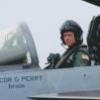
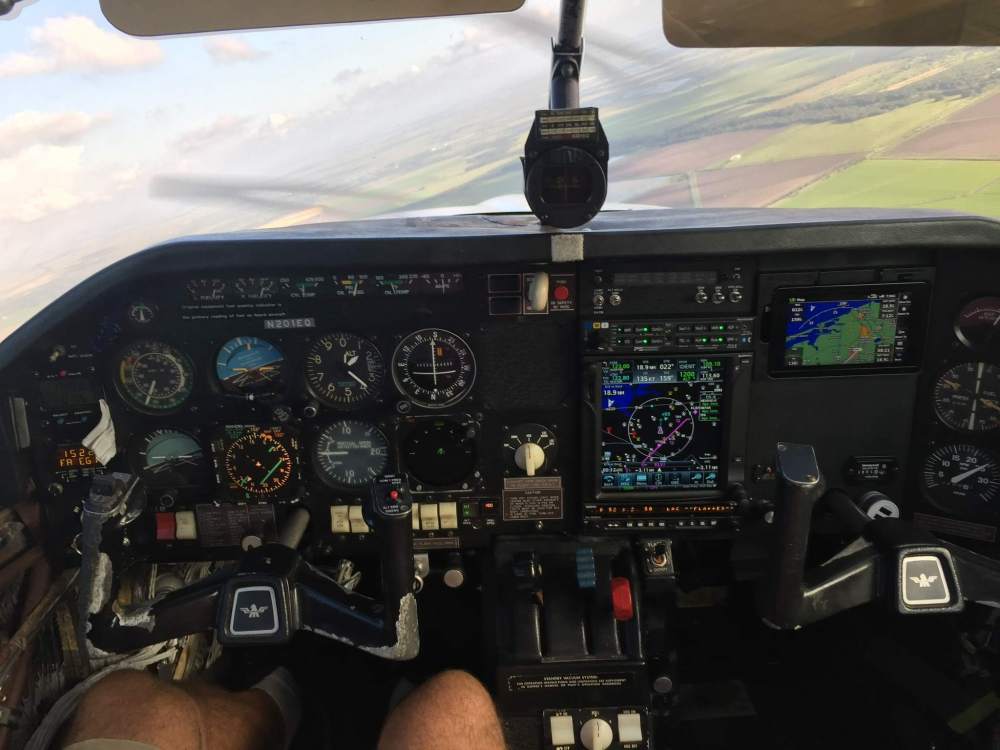




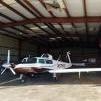





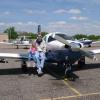
.thumb.png.7c67574d7b28f67b0b4a17760919b1ac.png)

